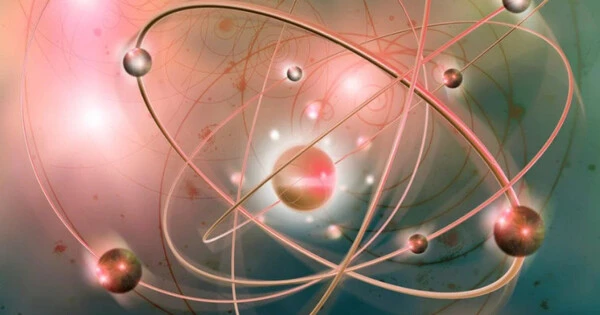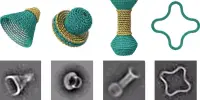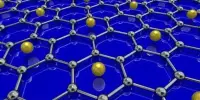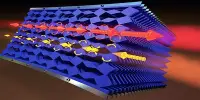Purdue University researchers have opened a new frontier in quantum science and technology by using photons and electron spin qubits to control nuclear spins in a two-dimensional material, enabling applications such as atomic-scale nuclear magnetic resonance spectroscopy, as well as reading and writing quantum information with nuclear spins in 2D materials.
The researchers used electron spin qubits as atomic-scale sensors and also achieved the first experimental control of nuclear spin qubits in ultrathin hexagonal boron nitride, as reported in Nature Materials.
“This is the first study to show optical initialization and coherent control of nuclear spins in 2D materials,” said Tongcang Li, a Purdue associate professor of physics and astronomy as well as electrical and computer engineering and a member of the Purdue Quantum Science and Engineering Institute.
“We can now use light to initialize nuclear spins, allowing us to write and read quantum information with nuclear spins in 2D materials. This method has a wide range of applications, including quantum memory, quantum sensing, and quantum simulation.”
We can now use light to initialize nuclear spins, allowing us to write and read quantum information with nuclear spins in 2D materials. This method has a wide range of applications, including quantum memory, quantum sensing, and quantum simulation.
Tongcang Li
Quantum technology depends on the qubit, which is the quantum version of a classical computer bit. It is often built with an atom, subatomic particle, or photon instead of a silicon transistor. In an electron or nuclear spin qubit, the familiar binary “0” or “1” state of a classical computer bit is represented by spin, a property that is loosely analogous to magnetic polarity – meaning the spin is sensitive to an electromagnetic field. To perform any task, the spin must first be controlled and coherent, or durable.
The spin qubit can then be used as a sensor, probing, for example, the structure of a protein, or the temperature of a target with nanoscale resolution. Electrons trapped in the defects of 3D diamond crystals have produced imaging and sensing resolution in the 10-100 nanometer range.
However, qubits embedded in single-layer or two-dimensional materials can get closer to a target sample, providing higher resolution and a stronger signal. In 2019, the first electron spin qubit in hexagonal boron nitride, which can exist in a single layer, was constructed by removing a boron atom from the atom lattice and trapping an electron in its place. Boron vacancy electron spin qubits also provided a tantalizing path to controlling the nuclear spin of the nitrogen atoms that surrounded each electron spin qubit in the lattice.
In this work, Li and his team established an interface between photons and nuclear spins in ultrathin hexagonal boron nitrides.
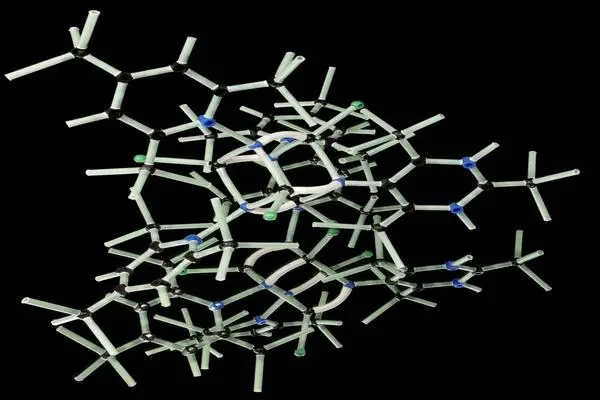
The surrounding electron spin qubits can optically initialize (set to a known spin) the nuclear spins. A radio frequency, once initialized, can be used to change the nuclear spin qubit, essentially “writing” information, or to measure changes in the nuclear spin qubits, essentially “reading” information. Their method uses three nitrogen nuclei at once, with coherence times that are more than 30 times longer than those of electron qubits at room temperature. Furthermore, the 2D material can be layered directly onto another material, resulting in the creation of a built-in sensor.
Li stated, “A 2D nuclear spin lattice will be suitable for large-scale quantum simulation. It can operate at temperatures higher than superconducting qubits.”
Researchers began by removing a boron atom from the lattice and replacing it with an electron to control a nuclear spin qubit. The electron is now in the middle of three nitrogen atoms. Each nitrogen nucleus is currently in a random spin state, which can be -1, 0, or +1.
The electron is then pumped to a spin-state of zero using laser light, which has no effect on the spin of the nitrogen nucleus.
Finally, a hyperfine interaction between the excited electron and the three nearby nitrogen nuclei causes a change in the nucleus’ spin. When the cycle is repeated several times, the nucleus’ spin reaches the +1 state, where it remains regardless of subsequent interactions.
